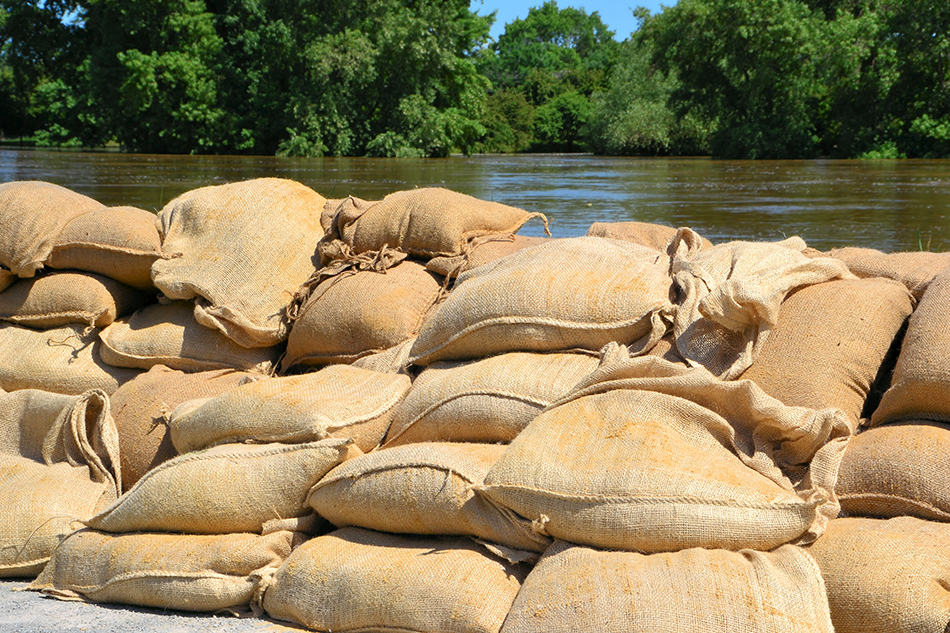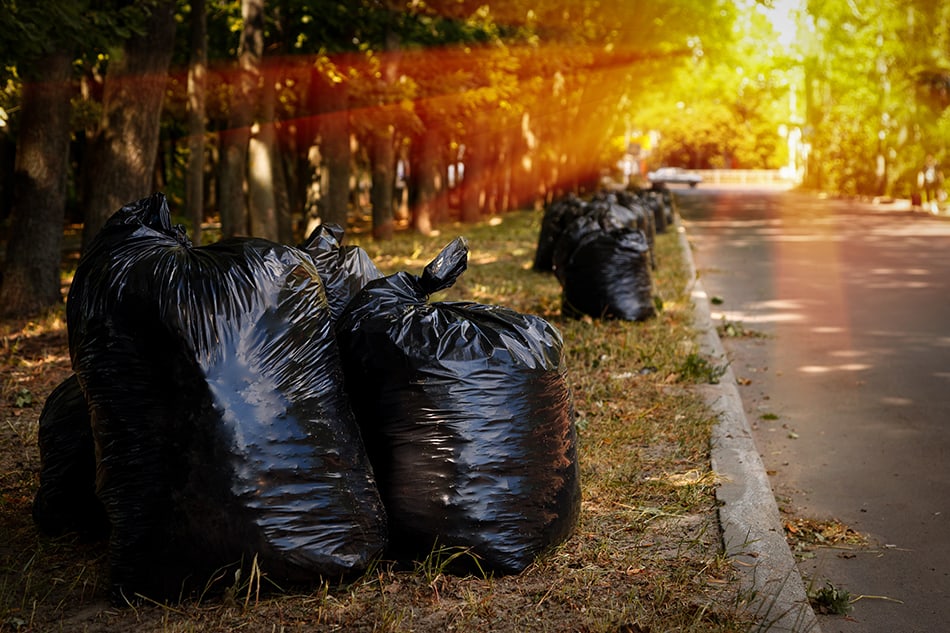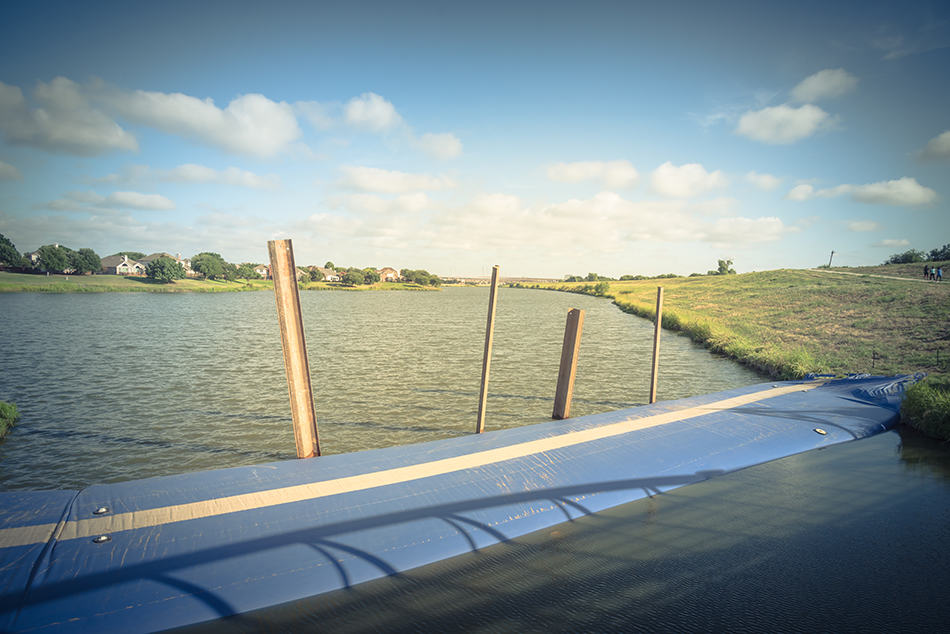Anyone who has experienced a flood or watched footage of one on TV will probably have noticed that sandbags are commonly used as protection against floodwater. But are sandbags the best choice in a flood, and what alternatives are there to consider? Read on for all the information you need on the alternatives to sandbags for flooding.
Sandbags have routinely been the most popular choice of protection against flooding in North America and some parts of Europe for many years, but they have numerous disadvantages, which has led many people to investigate alternatives to sandbags in the event of a flood. Some of the reasons why sandbags are not the best protection against flooding are:
Downsides to Sandbags for Flooding
Cost
Sandbags have long been thought of as a low-cost means of preventing flood damage to homes, as they are simply made from jute fabric and sand, which are both inexpensive products. However, the labor involved in making these bags is quite extraordinary, and many hundreds can be needed to protect one property alone, which can make the cost really mount up.
Time-Consuming
The production of sandbags is time-consuming, which is what leads to shortages in emergency situations. Once you have bought sandbags, it is also a time-consuming process to get them from your vehicle to your property due to the hefty weight of sandbags.
This is not a prevention method you can throw together in the space of a few minutes, so it will really only work if you have an advance warning of a flood.
Disposal
One of the biggest problems with sandbags is what to do with them in the aftermath of a flood. The sand absorbs contaminated floodwater and then holds onto it, causing the multiplication of bacteria. These sandbags will need to be carefully disposed of, which adds a further cost to their use.
Weak
Sandbags are intentionally made from weak materials to make them cheap. This can cause a problem if the sandbag gets snagged and the fabric rips, or if the sandbag bursts because wet sand will then leak and add a further mess to clean up.
Store Badly
Sandbags deteriorate easily when they are being stored, especially in cold or damp areas such as warehouses, garages, or basements. This means that if you keep sandbags in case of an emergency, you’ll need to routinely check on them and potentially replace them, as you don’t want to find yourself in a flood with damaged sandbags.
Weight
Sandbags are very heavy, so much so that many people would be simply unable to lift them in an emergency situation. This means that they are not a viable option for those who are elderly or struggle to lift heavy items. It also means that they require a lot of manpower to move the sandbags from trucks to the vulnerable parts of town where they are needed.
Size
Sandbags come pre-filled with sand, and in order to be functional, they need to be quite large. However, this is a problem when it comes to storing them because they take up so much space.
Emergency services that store large amounts of sandbags all year round would require enormous storage space to keep them in. The size of sandbags also means that they fill up a truck or store warehouse quickly, meaning less is available in bulk than a smaller alternative.
Single-Use
Sandbags are single-use items, which means they will need replacing after they have been used. Although sandbags are inexpensive to buy, if you live in a flood-prone area and need to keep buying new sandbags, then the cost can really mount up over the years.
A reusable alternative to sandbags for flooding might work out to cost less in the long run, even if it is more expensive to buy at first because you won’t have to continually replace them. Even if you haven’t used your sandbags, you might find that they need replacing often, as they do not have a long lifespan while being stored.
Not Environmentally Friendly
Sandbags use one of the earth’s natural resources as their main component; sand. This means that they are not sustainable. The fact that they can only be used once also makes them non-environmentally friendly.
Many people mistakenly believe that sandbags are biodegradable because they are essentially just burlap filled with sand; however, because of the contaminated water used sandbags contain, they have to be carefully disposed of and therefore cannot be allowed to biodegrade.
Alternative Flood Protection Options:
There are several alternative products that you can use instead of sandbags in the event of flooding. Some of these are intended for wide-scale flooding, while others can be used to soak up leaking water, for example, if a pipe bursts in your home.
Poly Tube Flood Barrier
This flood barrier is an alternative to using sandbags, but the idea is much the same. It utilizes a plastic tunnel which you can buy in various sizes of up to 50 feet in length. The tunnel is supplied empty and hollow and will need to be filled by the owner before use.
You can use sand to fill the tube, but the most popular choice is dirt or soil dug up from around the yard. Once filled, the tube will be positioned around the perimeter of your home, acting as a heavy, physical barrier to prevent water from getting past and causing flood damage to your house.
This poly tube works in exactly the same way as sandbags in the way it blocks the access of floodwater to the property by creating a large and heavy blockage that water cannot seep through.
The benefit of the poly tube is that the whole thing can be moved at once and curved around to fit the shape of your property, unlike sandbags which need to be moved one at a time. The tube will be very heavy once filled, though, and will likely need at least two people to maneuver it.
Transportable Flood Fence Barriers
Transportable flood fence barriers are commonly used by environmental agencies as a means of temporarily blocking off parts of a town or village that are susceptible to flooding during heavy rainfall. These fences are made from heavy metal frames which are fitted with waterproof covers. They will stop floodwater in its tracks and actually work much more effectively than sandbags.
These flood fence barriers are easy to move and can be fixed together alongside each other to create miles of flood fencing if necessary.
For use around the home, you will need enough pieces of flood fence to create a solid perimeter around the boundary of the property. This method works well to ensure floodwater does not gain access to the house.
Transportable flood fence barriers are great because they are fairly inexpensive and can be reused over and over again if you live in an area that is prone to flooding. They are solid and sturdy, but most people of average strength find them fairly easy to move.
The key to success when using flood fence barriers is to ensure they are in place before floodwaters arrive because they are a preventative method and will not be of any use once the water has found its way into your property.
Garbage Bags Filled with Dirt
If you find yourself in a flood situation and you need to make an alternative to sandbags with items you already have in your home, then utilizing garbage bags is a good option.
Most people already have garbage bags in their cupboards, but you’ll want ones that are strong so that they don’t tear apart when you try to lift them full of sand or soil. If you don’t have any strong garbage bags to hand, you can double them up to increase their strength.
Fill your garbage bags with sand, dirt, or any other heavy and moldable material you have lying around in your yard, and then use these bags in the same way you would use sandbags.
This is also a good alternative to sandbags if you are preparing for a flood in advance and want to save some money because you’ll be making use of things you already have around the home.
Inflatable Dam
These inflatable dams do not inflate with air, as these would be too light and easily pushed aside by floodwater. Instead, they are inflated with clean water.
If you’ve ever tried to carry a large bucket of water, you’ll know how heavy and difficult to move water can be, which oddly enough makes it the ideal substance to use in a battle against itself; flood water. These dams are extremely convenient because they can be rolled up and stored in a garage or basement when not in use and then easily be inflated when they’re needed.
To use them, you would connect your garden hose to the opening nozzle on the inflatable dam and turn it on until the water has filled it. This setup is not labor-intensive, which means it is suitable for people who might struggle to lift sandbags.
Setting up an inflatable dam is also quick and simple, so you can protect your property in a hurry at short notice in a flood situation. When using inflatable dams, you’ll need to position them to create a border around the perimeter of your property before you fill them with water because once full, it will be almost impossible to move them manually.
You’ll need enough to completely secure the perimeter of your home to prevent water from flowing through any gaps in your inflatable fence. Inflatable dams can be quite expensive, so if you have a large house, this option could turn out to be quite costly, though it may be worth it if the pros outweigh the cons for your situation.
Inflatable dams come in various lengths and heights, making them suitable for blocking even very deep floodwater. The fact that they are reusable means that inflatable dams could work out cheaper than other options in the long run, especially if you live in a location that is prone to flooding.
Sandless Sandbags
There are a number of innovative sandless sandbags on the market that have been specifically designed as an alternative to sandbags. The idea behind most of these products follows the same premise; a self-inflating sandbag that both absorbs water as well as blocks it.
By utilizing lightweight, absorbent materials, sandless sandbags are much more lightweight when they have not been used, making them much smaller and easier to transport compared with sandbags, therefore making them a more convenient alternative for both manufacturers and customers.
In most cases, sandless sandbags weigh between 200 and 400 grams depending on the brand, making them much more accessible to people who might struggle to lift a sandbag. They are also less expensive than sandbags and take up significantly less space.
In fact, you could store a pack of 20 sandless sandbags in the same area of your basement or garage as would be taken up by just one sandbag! Sandless sandbags contain various types of absorbent polymers instead of sand.
In order to use them, you can lay them at the doors of your property, and when the bag comes into contact with water, it will absorb around 20 liters of water and dramatically inflate, creating a boundary that no water can cross.
Unlike sandbags, sandless sandbags are designed to retain all of the water they have absorbed until they are no longer needed, making for an easier clean-up. Sandless sandbags can be kept for as long as 20 years without being used, so you can buy them as a precaution and keep them for many years, knowing you have a plan in the event of a flood.
Brands of sandless sandbags include:
- Stormbags
- Hydrabarrier
- Absorbeez
- Sorbarix
- Quicksandbags
- FloodSax
- Aqua-Sac
- Hydrosack








